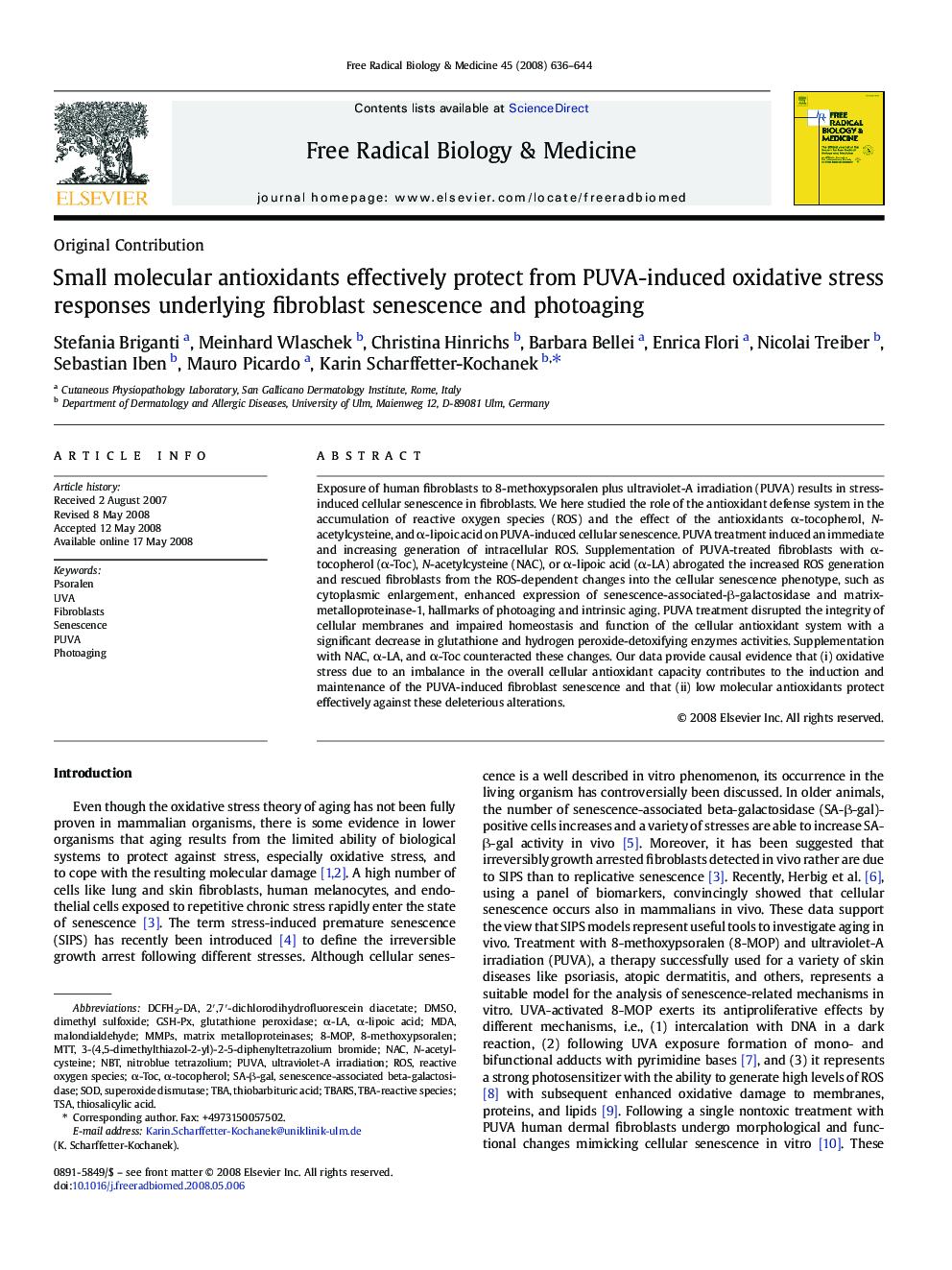| Article ID | Journal | Published Year | Pages | File Type |
|---|---|---|---|---|
| 1910841 | Free Radical Biology and Medicine | 2008 | 9 Pages |
Exposure of human fibroblasts to 8-methoxypsoralen plus ultraviolet-A irradiation (PUVA) results in stress-induced cellular senescence in fibroblasts. We here studied the role of the antioxidant defense system in the accumulation of reactive oxygen species (ROS) and the effect of the antioxidants α-tocopherol, N-acetylcysteine, and α-lipoic acid on PUVA-induced cellular senescence. PUVA treatment induced an immediate and increasing generation of intracellular ROS. Supplementation of PUVA-treated fibroblasts with α-tocopherol (α-Toc), N-acetylcysteine (NAC), or α-lipoic acid (α-LA) abrogated the increased ROS generation and rescued fibroblasts from the ROS-dependent changes into the cellular senescence phenotype, such as cytoplasmic enlargement, enhanced expression of senescence-associated-β-galactosidase and matrix-metalloproteinase-1, hallmarks of photoaging and intrinsic aging. PUVA treatment disrupted the integrity of cellular membranes and impaired homeostasis and function of the cellular antioxidant system with a significant decrease in glutathione and hydrogen peroxide-detoxifying enzymes activities. Supplementation with NAC, α-LA, and α-Toc counteracted these changes. Our data provide causal evidence that (i) oxidative stress due to an imbalance in the overall cellular antioxidant capacity contributes to the induction and maintenance of the PUVA-induced fibroblast senescence and that (ii) low molecular antioxidants protect effectively against these deleterious alterations.
